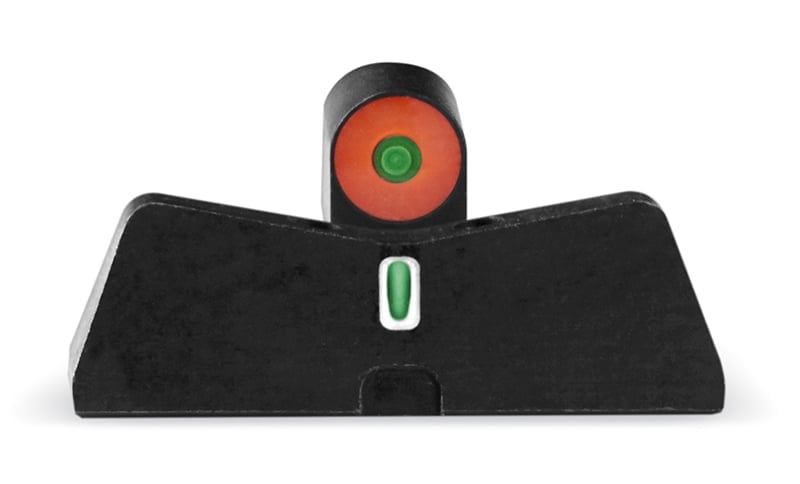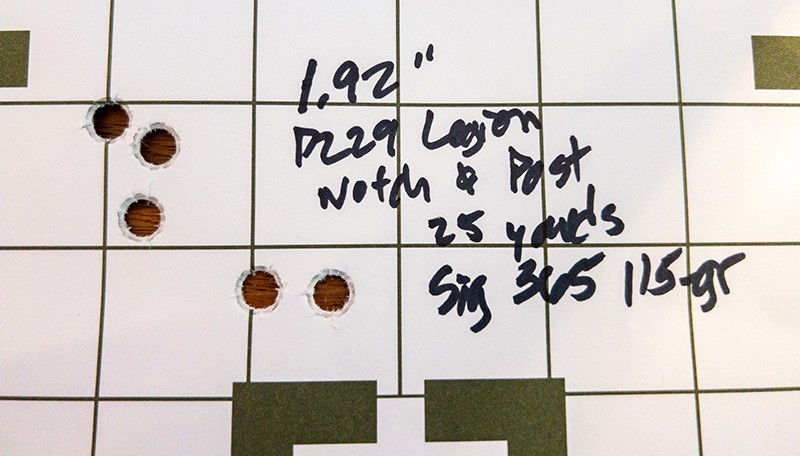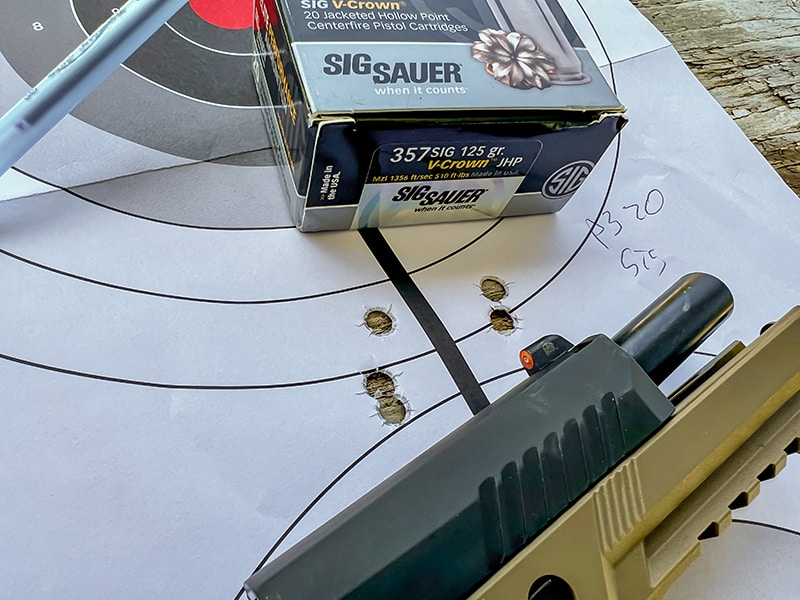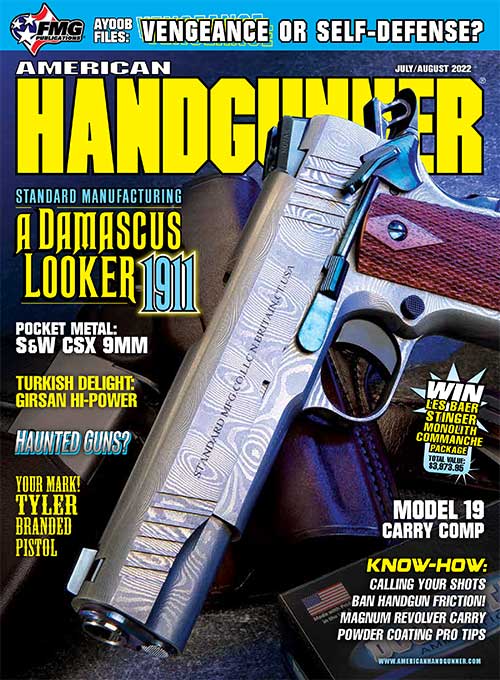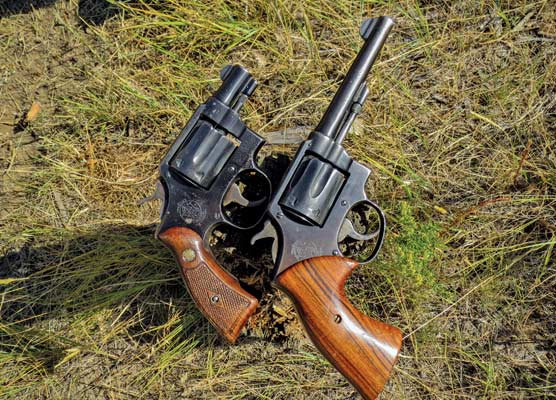Can You Be Fast and Accurate?
Putting Big Dot Sights to the Precision Test
My eyesight is degrading faster than Uncle Joe’s poll numbers, so a change in sighting is in order. I can shoot traditional notch and post sights just fine, but it definitely takes me longer to acquire a proper sighting picture. Finding and focusing on the front post, orange glow paint or not, is slower than it used to be.
So, I’ve been gradually migrating more and more guns to XS Big Dot Sights. If you want to change your sights, check out Part Deux of this series, and we’ll walk you through the process. This is not a new thing for me; I probably tried my first set 10 years ago, give or take. They work. They’re easy to see. And, as a result, they’re fast. Really fast.
If there’s one of those little conscience gnomes sitting on my shoulder, he’s saying something like, “Yeah, but the internet says Big Dot Sights aren’t precise. You can’t make 80-yard headshots while engaged in a full-tilt fight for your life.” Barring the ignorance of that line of reasoning, I figured it would be interesting to test out the internet myth. Using irons, can I shoot as precisely with Big Dots as with traditional notch and post handgun sights? To keep things honest and fair, I’m going to compare “regular” combat post and notch sights to the Big Dots, not competition sights dialed in for bullseye shooting.
Weird Science
Figuring this is an excellent opportunity to channel my inner Neil DeGrasse Tyson, I decided to do a somewhat controlled experiment. I’ve got two different pistols sitting here, both equipped with standard notch and post sights. Both are plenty accurate, as proven by previous outings using a handgun scope mounted with a UM Tactical Rail adapter. One is the Sig P229 Legion 9mm, and the other is a Sig P320 full size chambered in .357 Sig. Both will shoot 1.3 to 1.5″, five-shot groups from 25 yards with the right ammo.
Why not tell my boss I have to “work” at the range on two different days? I’ll shoot the heck out of the iron-sighted current configurations on day one. Before the next outing, I’ll install Big Dots on both pistols, repeat the process under the same conditions, and use the same ammo. I’m standing firmly by my assertion this is genuine science work and not an excuse to goof off at the range. Follow the science, they say, so I am!
Point of Impact
The first thing I noticed with the Big Dot configurations was the unique way point of impact relates to the point of aim. At ranges from up close and personal to maybe 15 yards, the bullets shot “through” the dot for both pistols. This is part of the reason why the Big Dot sighting system is so fast. Just cover your desired target with the dot and shoot. You’ll notice that colossal dot front sight leaps into view and settles into the shallow notch groove of the rear sight.
The sight picture changes to a slightly different approach at longer distances, like my 25-yard precision testing distance. Rather than covering your target with the dot, use the circle as a “six o’clock” hold indicator. You’ll still stack the dot on top of the shallow “v” notch, but rather than shooting through the dot, settle the dot so its apex rests right where you want the bullet to land. Using the top of the circle provides a surprisingly precise way to aim — and it’s still fast.
One side note. Some companies, and I love ya but am looking at you, Sig, will mix up sight heights on variants of the same model, like, say, the P229 standard and Legion models, so if you try some Big Dots and your elevation point of impact is off, call the folks at XS Sights, and they’ll help you out.
The DXT2 sights I installed on both pistols came with rear sights equipped with a Tritium-filled white vertical bar centered in the notch of the “v” pattern. I found I used this vertical bar — a lot — for precise aiming at longer distances. My sight picture was more of a lollipop view, with the top of the pop indicating the point of impact.
Know Your Gun
A quick diversion is in order here. Regardless of your gun and sights configuration, it’s essential to determine precisely how it and your specific choice of ammo behave together. I’ve got notch-and-post-sighted pistols using six o’clock hold aiming and others that’ll shoot through the front sight. And every time you shoot different ammo, your point of impact may vary again.
Decide on your desired carry or competition ammo, then head to the range and shoot carefully at varying distances to know precisely where perfectly-placed shots will land.
Sighting Precision
Once I had the point of impact figured out, I wanted to see how precisely I could shoot using the DXT2s compared to traditional sights. I set up on the bench using a Ransom Multi-Caliber rest and targets at 25 yards — ready for five-shot group shooting.
Before upgrading the sights, I used the existing notch and post sights to shoot some groups. With the 9mm P229 Legion, I was able to get a best “Tom’s old eyes using notch and post sights” five-shot group of 1.92″ using Sig Sauer V-Crown 365 115-grain ammo. Switching over to the Sig P320 chambered in .357 Sig, I shot a notch and post group of 2.05″ using Sig’s 125-grain V-Crown ammo.
Now, on to shooting groups with the Big Dots. For lining up each shot, I naturally gravitated to that lollipop view, using the vertical bar to make sure the circular dot was centered laterally. The circle sitting in the shallow “v” provided the elevation cues. Placing the top of the circle gave me the intended impact point.
When you think about it, it’s a similar process as lining up notch and post sights for precision. You center the post in the rear notch, ensuring there’s an equal amount of light on either side. Then you make sure the top of the post is flush with the top of the notch frame on both sides. Then, you maneuver all of that to your intended target.
Using the P229 Legion with the same Sig Sauer V-Crown 365 115-grain ammo, I shot a couple of five-shot, 25-yard groups averaging 1.78 inches. With the P320 using Sig 125-grain V-Crown ammo, I shot a 1.89″ group.
The bottom line? I actually did a little better using the Big Dots at 25 yards. I guess my eyes like the non-traditional view with that “can’t miss” front sight.
Learnings
Here are the important takeaways. This little experiment worked for me. I can find my sights faster and shoot slightly more accurately using the DXT2 Big Dots. Can you? Perhaps you can, so give it a try. That’s the thing about eyesight. Everyone sees sights and targets differently.
What I will say with confidence is this. Challenge those apothegms passed along at the gun store counter. I can’t tell you how often I’ve heard in person and online that Big Dots “aren’t as accurate” or that you can’t shoot precisely with them. Rather than taking the hearsay at face value, I tried it. And guess what? It worked just peachy for me.


